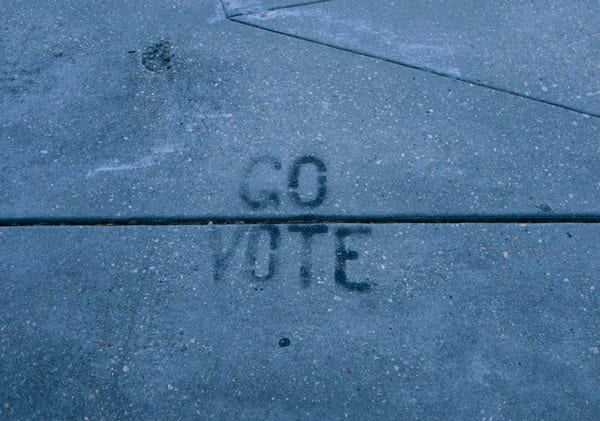
October 31, 2018; New York Times and Washington Post
The midterm elections will soon be upon us. In many states, citizens will vote not just for federal and state officials, but also on ballot initiatives. Nationally, there are 155 statewide measures in 37 states. Of these, 69 were initiated outside the state legislature. “The biggest topic this year is election policy. Twenty measures in 15 states would reshape redistricting, voting requirements, ballot access, campaign finance and ethics,” notes Lisa Lerer in the New York Times.
As Governing details, common additional topics include healthcare, reproductive rights, immigration, transgender rights, marijuana legalization, guns and criminal justice, climate change, taxes, transportation, and housing, among others. In two states—Arkansas and Missouri—voters are considering minimum wage increases. There is also a slew of local measures.
When we think of nonprofits in elections, we often focus on voter registration. But nonprofits can do more. While the Johnson Amendment bans nonprofit candidate endorsements, nonprofits can support initiatives. As Nonprofit VOTE explains, “501c3 organizations are free to take sides on ballot measures as a lobbying activity, subject to normal limits on lobbying.”
Nonprofits that make a 501(h) election may spend up to 20 percent of their budget on “lobbying” activities (including work for or against a ballot initiative); if not, lobbying is supposed to be “insubstantial”—very roughly defined as three to five percent of one’s budget. Among permissible activities on ballot measures are “making an endorsement, communicating your position to the public, organizing volunteers to work on passage or defeat of an initiative, or hosting an educational forum or event.” As NPQ’s Rick Cohen noted around the time of our nation’s last midterm elections, “There should be a nonprofit imperative at the ballot box that goes beyond voting for candidates, but voting on issues.”
Some nonprofits and foundations appear to have taken this message to heart. For example, for only the second time since its founding in 1946, the Seattle Foundation announced on October 22nd it was endorsing Initiative 1631, which would place a fee on carbon emissions to reduce fossil fuel use and finance renewable energy investment. In its statement, the foundation explained that support for the initiative was consistent with their climate justice impact strategy. The initiative, they added, “if passed…will help protect the communities most vulnerable to the negative impacts of climate change. It will reinvest hundreds of millions of dollars annually in clean wind, water and solar technology, and transportation improvements that support the health and livelihood of Washington communities.”
Sign up for our free newsletters
Subscribe to NPQ's newsletters to have our top stories delivered directly to your inbox.
By signing up, you agree to our privacy policy and terms of use, and to receive messages from NPQ and our partners.
Other nonprofit groups backing Initiative 1631 in Washington include a wide range of nonprofits, including the Nature Conservancy, the American Lung Association, the Union of Concerned Scientists, the League of Women Voters, and Planned Parenthood, among many others. In the case of the Nature Conservancy, its support includes a $1.55 million contribution to the campaign. Bill and Melinda Gates also donated $1 million.
In Montana, a leading ballot issue is Initiative 185, which would raise the tobacco tax by $2 a pack to sustain Medicare expansion in that state. Not surprisingly, the tobacco industry opposes the initiative, and Altria (formerly Philip Morris) donated $12 million to the “no vote”; the “no” side raised $17 million total. In a state of just over one million people, this works out to roughly $16 per person.
But nonprofits are not giving up. Many have joined a coalition called Healthy Montana, which includes the Montana Hospital Association, AARP Montana, and the American Cancer Society, American Heart Association, and American Lung Association, in addition to hospitals and clinics around the state. This November, measures to expand Medicare in Idaho, Nebraska, and Utah are also on the ballot.
Perhaps the most prominent example of electoral intervention by a foundation, however, comes in California, where the AIDS Healthcare Foundation, based in Los Angeles, has made a $10 million donation to the Yes on 10 campaign—a measure that would repeal a statewide law that restricts rent control and returns rent control decision-making to localities. All told, the group has donated over $17 million to the pro-rent control campaign. Board chair Cynthia Davis explained the nonprofit’s rationale: “We see firsthand the role that stable, affordable housing plays in the health and well-being of our patients. We also see the negative effect that out of control rents are having on our staff, who increasingly have to commute longer distances to work in our clinics and testing facilities. Clearly, the rent is too high, and it affects the well-being of thousands of Californians.”
The above provide just a few examples of the many places where nonprofits have intervened on ballot items. Where is your nonprofit engaged? What’s worked and where have there been challenges? Please let us know how your nonprofit—and the broader nonprofit and philanthropic world in your community—has approached the 2018 midterms.—Steve Dubb













